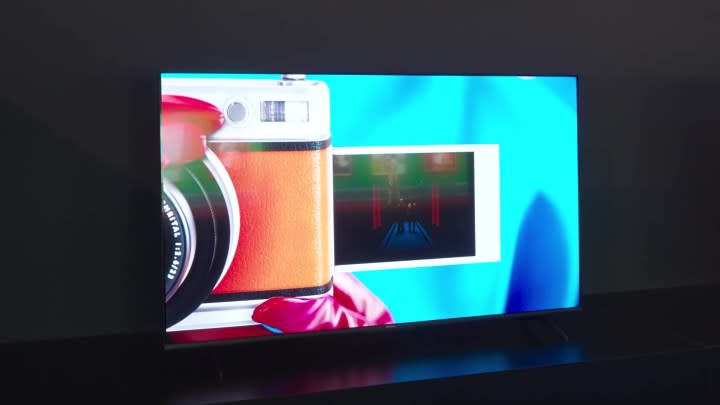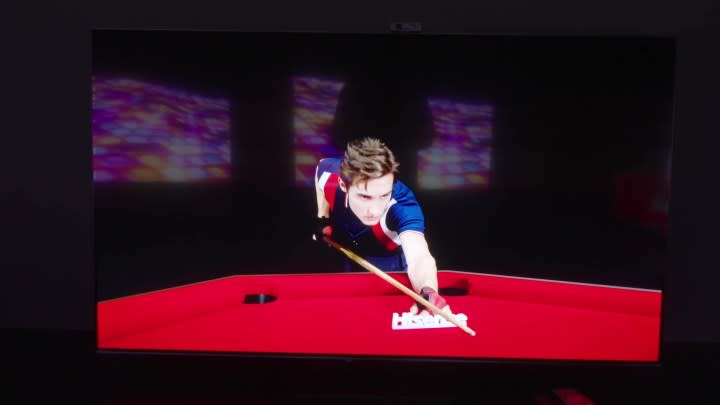A first look at Hisense’s 2024 TV lineup already impresses
Just when we thought we knew what the Hisense 2024 TV lineup looked like … surprise, there’s a new model! Say hello to the new Hisense U9. Oh, and since we’re here, how about we take a closer look at the UX series, too.
We’re going to give the full rundown of the U9 in terms of critical specs, pricing, and when we expect actual availability, along with some new info on the UX series. And then we’ll look at the U9’s performance, because I did take some time to measure it — and spent some time watching it, too.
Let’s start with how the U9 fits into the Hisense lineup. In 2023, the U8K got as large as 85 inches. And the UX series started at 85 inches and went up from there. The price and performance gap between the the U8 and UX series was substantial.
This year, the U9 comes in to bridge the gap in terms of price, as well as performance. But overall,we can see that Hisense has allowed its technology to trickle down. You’ll note in our Hisense U8N review a good many similar performance specs compared to 2023’s UX, believe it or not. And the Hisense U9 in some ways outperforms that TV, too. That said, the new 2024 UX is just on an entirely different level.
The 2024 Hisense lineup
Let’s take a look at teh 2024 lineup in as organized a manner as we can.
The Hisense ULED lineup starts with the U6 at the lower end, then the U7, and then you get to the U8 series. That’s simple enough.
The 75-inch U8N promises about 3,000 nits (though I’ve already measured it at closer to 3,500 nits) and comes in at $2,000. You can buy that TV now if you want. The 85-inch U8N also puts out about 3,500 nits peak brightness and costs about $2,800. That TV is expected in late summer.
Then we step up to the 75-inch U9, which promises up to 4,000 nits. It’ll get even brighter — more on that in a moment — and run about $3,000. That TV is expected in midsummer.
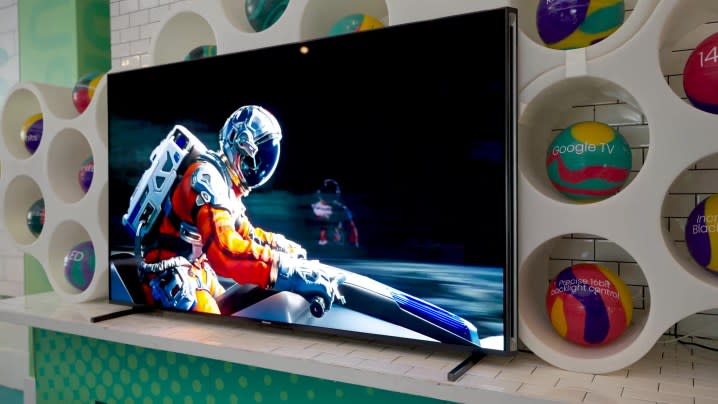
The 85-inch U9 increases peak brightness to 5,000 nits, is expected to cost $4,000, and is expected in late summer.
Then we get to the absolutely over-the-top UX series.
There’s a 98-inch model that is promised to hit about 5,000 nits. It’s expected to cost $8,000, and it is coming out sometime in the summer. That’s about as specific as I can get right now.
But don’t forget that Hisense still offers the 100-inch U8K from 2023, as well as a new U76N this year. Both have huge screens that cost far less than the premium 98-inch UX.
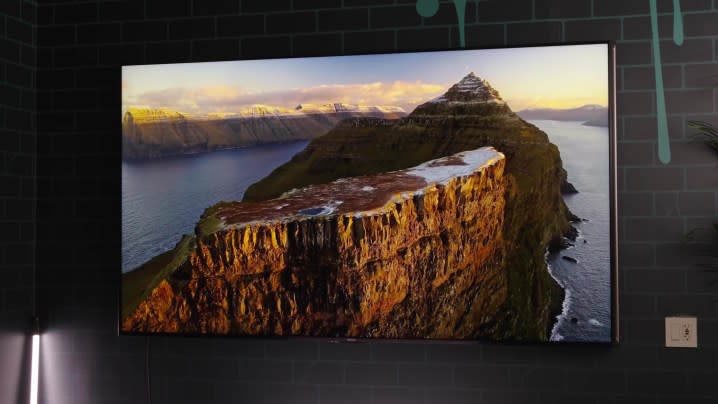
And finally, there’s the 110-inch UX. It’s promised to hit up to 10,000 nits for brief moments. We don’t have a price yet, and it will the be the last TV to come out, probably this fall.
So Hisense covers a lot of options with different blends of price, performance, and size.
Hisense U8N update
One of the little quirks that bugged me about the Hisense U8N was that if you turned the volume all the way down — not muted, just turned down — you got this mute icon in the upper right of the screen, and you couldn’t turn it off. I talked to Hisense engineers about that, and they are working on an update to remove that.
I also brought up the fact that the U8N I had tested — like the U9N I also was testing at the time — tracked very high on the electro-optical transfer function (EOTF) curve in Filmmaker Mode. That means that it pumped up the brightness in HDR beyond what was called for by the content. Hisense let me know that is not how its implementation of Filmmaker mode was supposed to work.
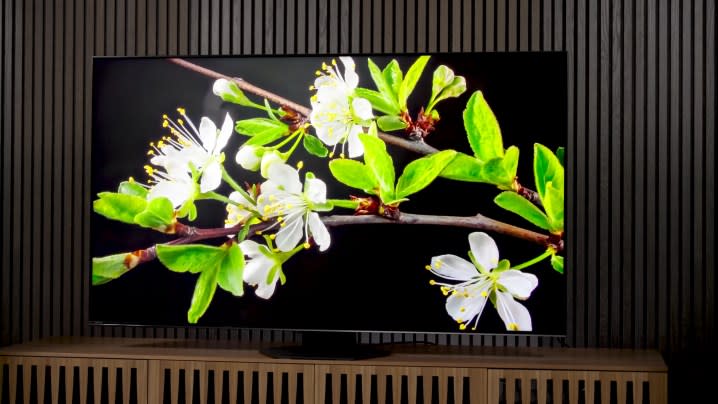
Ultimately, we unplugged the TV, plugged it back in, and then it measured perfectly. (Go figure.) Hisense suspects I may have triggered an undiscovered bug as I was playing with one particular setting by turning it on and off and on in rapid succession. That’s a good reminder that the TV I’ve been testing does not have its final firmware version. In fact, a few minor things are subject to change. But I hope the final version isn’t too far off from the TV I tested, because the TV I tested was otherwise exemplary.
Everything from white balance, to grayscale, to color accuracy and color saturation — both in SDR and HDR — measured below the threshold of error visible to the human eye.
Hisense U9 impressions
Like the U8N, the Hisense U9 has a broad range of adjustments that will allow you to dial it in for viewing in a very dark room, or in a very bright room (or if you just like an extremely bright picture). Honestly, I have never tested brighter TVs than those that I tested here at Hisense’s event. And I mean brighter by a significant margin.
The 75-inch U9 I tested has a claimed peak brightness up to 4,000 nits. I actually got 4,500 nits, and it held that number for about 2 whole seconds, which is longer than it sounds in the context of moving content. It then dimmed down to 3,000 nits — which, as a reminder, is still brighter than most TVs can get.
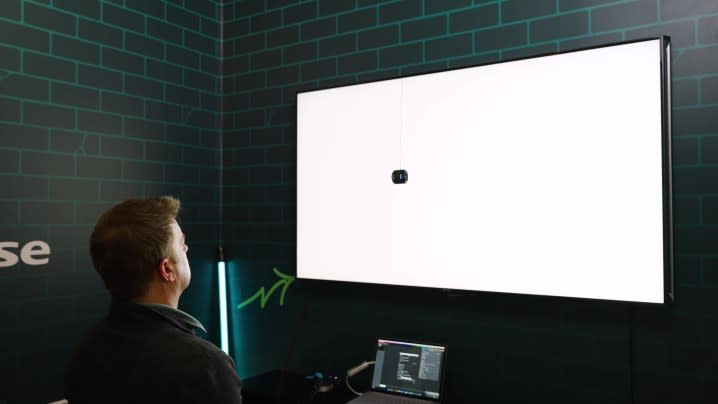
And that the brightness power is being handled responsibly. It pokes at you from little highlights in HDR content, and it helps lift SDR content a bit by raising the average picture level high enough that the image can do battle with almost any level of ambient light and still appear to be high contrast.
Speaking of contrast, Hisense told me approximately how many zones the U9 models use. And, frankly, it doesn’t matter. It’s a lot of zones. Probably more zones than it needs to pull off the nearly bloom-free and halo-free images I’m seeing. What really matters is that the backlight control system can operate swiftly. And at least with Peak brightness on high and local dimming on high, I am seeing no fluctuations. But take that with some skepticism because I did not have time to torture test the TVs just yet.
If you do want lightning-fast backlight response, though, the U9 (and up) offers a feature you won’t find on other Hisense TVs that speeds up the backlight at the expense of brightness. It’s kind of like black-frame insertion, I’m told. But according to our camera, it is not black frame insertion because there is no recordable flicker.
That’s about as much info as I have on this feature — Hisense didn’t have much in the way of details to share. But it’s an interesting one to see nonetheless.
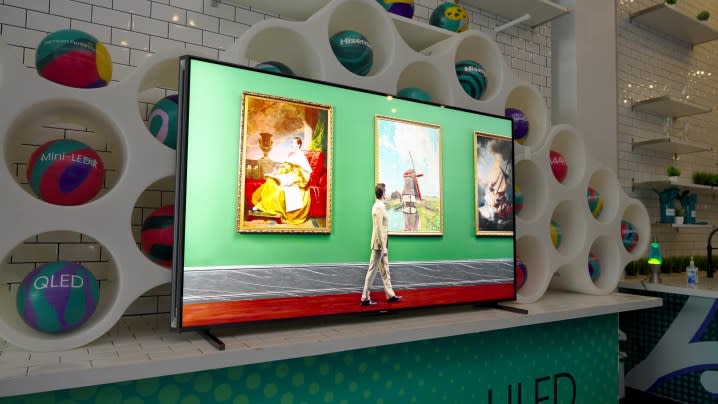
Just as the measurements suggested, color was spot-on and well saturated, The TV does 100%of DCI-P3 and about 77% of BT.2020. As for motion? There’s just a bit of judder in 24 frames-per-second (fps) content, even with Hisense’s film motion setting on. But that’s nothing to get upset about.
Upscaling and image cleanup looked really good to me in the short time I had with the TV. I watched about 40 minutes of various YouTube videos at differing levels of quality and didn’t see any egregious color banding or macroblocking, nor did I see a bunch of noise. I’d need to put the U9 side by side with the U8 to compare the different processors. The U9 gets Hisense’s best processor — just like the UX series — and all the content I watched looked great.
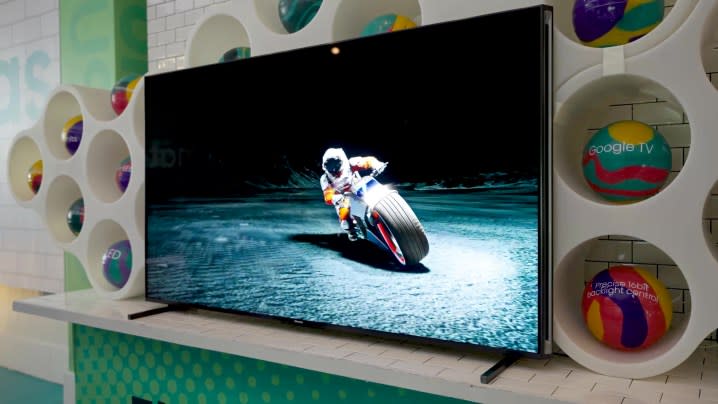
I think the biggest improvement in the U9 over the U8, though, is the use of the ADS Pro panel. Having this great picture quality available at more angles, and thus more seating positions, is just so important. This is a big upgrade, and one reason I might suggest getting a 75-inch U9 over an 85-inch U8 this year, if picture quality trumps size on your list of priorities.
All the right moves
I’m not shocked by anything I’ve seen so far. Hisense has made all the right improvements to its processing, and it’s on the record as saying it wants to provide the brightest, highest-value TVs on the market. It’s dialed in the accuracy for Filmmaker and Theater picture modes. The interface is snappy. The processing is solid, especially for the price, so you’re getting cleaner images from cable and satellite signals, and the motion is well within acceptable parameters for movies. For what you spend on these TVs, it’s just overwhelming.
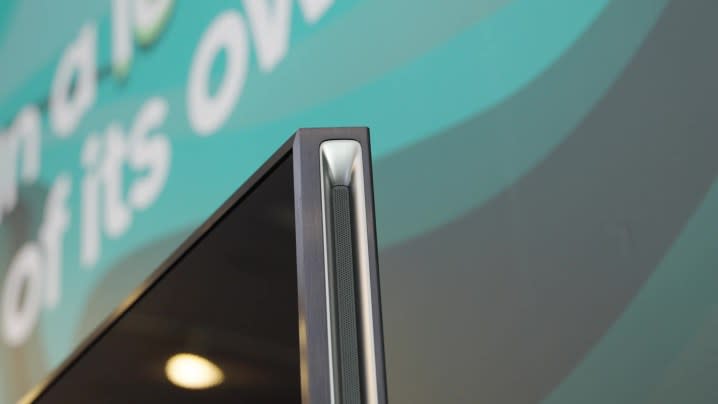
So that’s an early look at the U9. You may have noticed I didn’t talk about the speakers, and that’s because the audio tuning is not yet done. (And, frankly, the room in which I tested the U9 would have been terrible for audio.) I won’t test the audio until I can get it in our studio. But as a reminder, the U8N’s subwoofer is something of a marvel. And the U9, with its forward-firing side-mounted speakers (which, I know many of you are going to hate), is supposed to be much better.
I also have nothing to compare the U9 to yet. It’s early days. Hisense got me the U8N super early, but we’ll have to wait a while for a U9 to land at the studio. That’s OK … I think it’ll be worth the wait.
